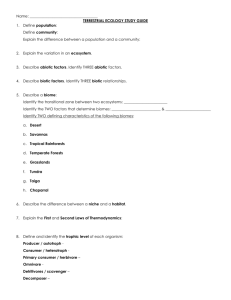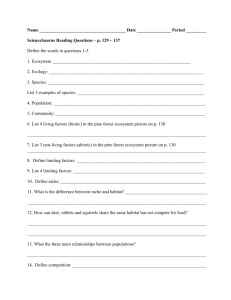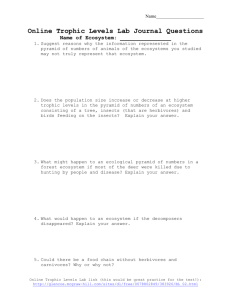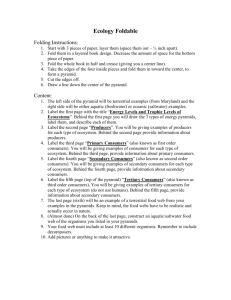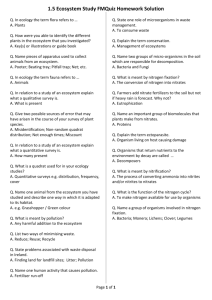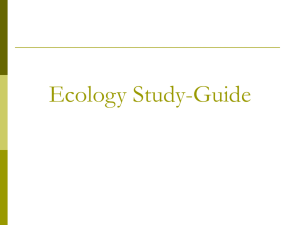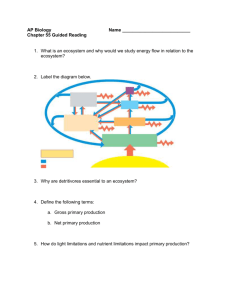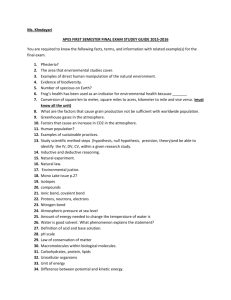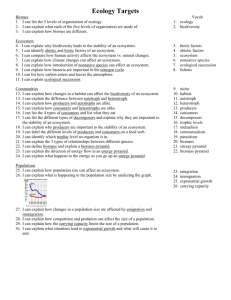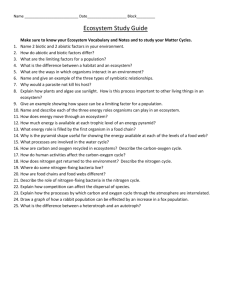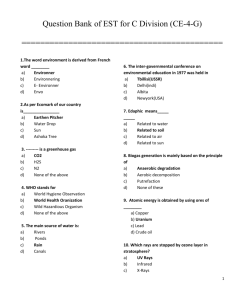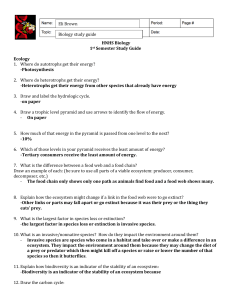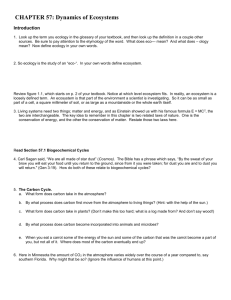here
advertisement
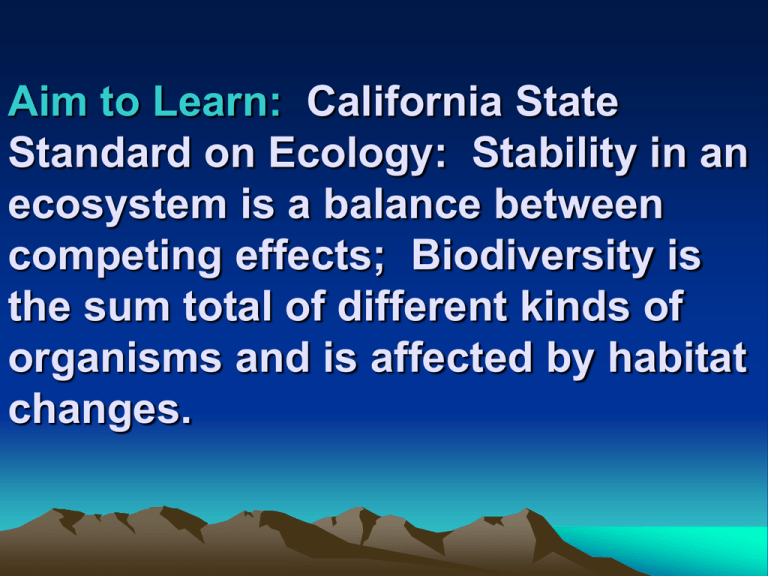
Aim to Learn: California State Standard on Ecology: Stability in an ecosystem is a balance between competing effects; Biodiversity is the sum total of different kinds of organisms and is affected by habitat changes. • b. Students know how to analyze changes in an ecosystem resulting from changes in climate, human activity, introduction of nonnative species, or changes in population size. • Global Warming from CO2 (mainly), a nonrenewable resource • Ozone “Hole” from chlorofluorocarbons • Zebra Mussel in SF Bay; Plants & Animals in Hawaii • c. Students know how fluctuations in population size in an ecosystem are determined by the relative rates of birth, immigration, emigration, and death. • China, India, Africa – high birth rates • Immigration > emigration Population Growth • Death Rate > Birth Rate Population Decreases • d. Students know how water, carbon, and nitrogen cycle between abiotic resources and organic matter in the ecosystem and how oxygen cycles through photosynthesis and respiration. • Nutrient Cycle (water, nitrogen, carbon) • Nitrogen Cycle • Carbon Cycle • e. Students know a vital part of an ecosystem is the stability of its producers and decomposers. • Food Chain • f. Students know at each link in a food web some energy is stored in newly made structures but much energy is dissipated into the environment as heat. This dissipation may be represented in an energy pyramid. • Food Pyramid Energy Pyramid (kcal is a unit of Energy) Much Energy is lost as Heat
